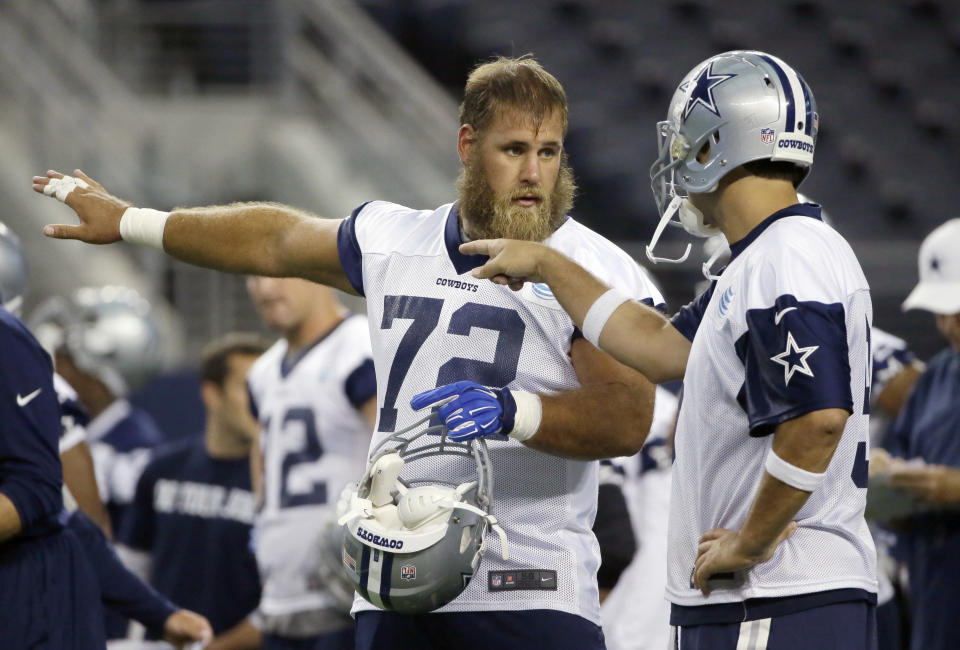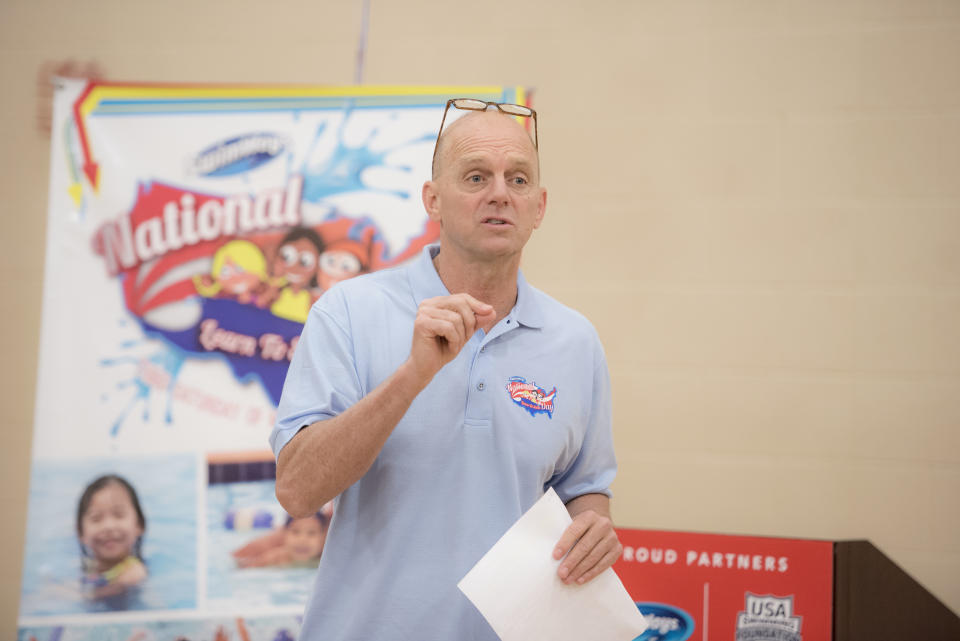Ex-Olympic swimmer has hopeful message for Cowboys' Travis Frederick, who is battling rare disease

Rowdy Gaines has a daily reminder of the disease that now faces Dallas Cowboys offensive lineman Travis Frederick.
“It never goes away,” says the Olympic gold-medalist swimmer. “I feel it right now.”
It is the tingling sensation that usually signals the onset of Guillain Barre Syndrome (GEE-yome buh-RAY), the rare and often terrifying condition that can strike anyone at any time, and can cause severe symptoms including paralysis. Frederick, who went public with his diagnosis last week, is one of the few (1 in 100,000) afflicted with the “inflammatory disorder of the peripheral motor and sensory nerves.” No one knows who gets it and why, other than it sometimes follows a flu-like virus or infection. For some reason, the body’s immune system starts to attack itself.
The good news is a full recovery is likely.
Gaines had the syndrome in 1991, and his toes still give him the pins-and-needles sensation that feels like a foot fallen asleep. He was in the ICU for six weeks. Whenever Gaines hears about another case of GBS, his first instinct is to reach out. He wants to do the same to Frederick.
“I’d be honored to talk to him,” Gaines says.

Degrees of severity in Guillain Barre
The disease usually creeps up the legs and arms in an ominous and scary way, leaving most patients aware yet increasingly immobile. “After the peak of damage,” says a website dedicated to explaining the rare syndrome, “the nerves usually undergo a slow healing process and are remyelinated or repaired; during this process the patient regains strength and sensation.”
In a statement, Frederick said he was “very optimistic about my condition and the immediate future, as I have been told the illness was detected at a fairly early stage.”
One of the leading experts in GBS, Ken Gorson, says the fact that the lineman has already put out a statement is a good sign, as it means Frederick is cognizant of what’s going on. For some, GBS can lead to delirium. For Gaines, he was so affected that his lungs began to lose function.
Hopefully, Frederick has a more mild, short-term version of the disease. “That’s the crazy thing,” Gaines says. “It can strike different individuals completely differently.”
Athletes have returned to peak form
A return to form for an elite athlete usually takes months instead of weeks. Because patients are usually laid up for a while (and in the worst cases, unable to feed themselves) the condition usually leads to weight loss. Former offensive line standout Mark Schlereth told ESPN Radio last week he went from 295 to 235 in two months when he was diagnosed with GBS in 1993. He said his recovery took 17 months overall. Gaines was so depleted that when he first reentered the pool after recovering, he needed his wife to prop him up. He had lost nearly 50 pounds.
The treatment is quite advanced from when Gaines and Schlereth were diagnosed. Gorson says today’s doctors infuse healthy antibodies into the patient as a form of “blood washing.” Gaines advises Frederick to get into the pool as part of his late-stage recovery as well, as water therapy can be soothing and not as arduous. Eventually, there’s a good chance Frederick will be in top form again. Gaines swam faster times after his recovery and qualified for the 1996 U.S. Olympic Trials, and Schlereth won a Super Bowl with Denver (and played multiple 16-game seasons) after he got better.
That’s the most important thing: GBS patients nearly always get better. Gorson says the mortality rate in the Western world is around 5 percent, and younger people are in better position to beat back the disease. Gaines says he spends a lot of his time reaching out to other GBS patients, including Chase Kalisz, who got the disease at age 8, needed a feeding tube, and eventually recovered to win a swimming gold medal in 2016.
The disease can be frightening, but the message Gaines wants to send is reassuring.
“With the exception of the first couple weeks, I always had hope,” Gaines said.
If Travis Frederick wants to talk, an Olympic champion is more than happy to pick up the phone.
More from Yahoo Sports:
• Does Eric Decker’s retirement with Patriots give opening for Dez Bryant?
• Tiger Woods sidesteps pointed question about President Trump
• Steph Curry weighs in, via essay, on gender equity issues
• Gay Cubs co-owner OK’d move to get Daniel Murphy

